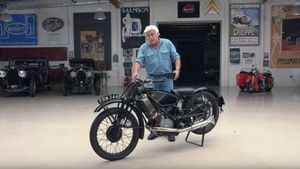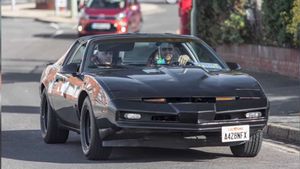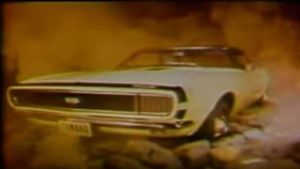Is it a car? Postal van? Mobility vehicle? Jacuzzi? Living room? No, it’s the Nissan Cube – a highly distinctive Japanese MPV that fits most of those eclectic guesses in some way or another. As the Cube nears classic status, is now the time to buy?
Have you ever clocked the unique sight of a Nissan Cube? If you have, we bet you stared. Don’t worry, we’ve done it too, and it happens virtually every time a Cube appears, for it is an unusual creature that drives among us. Even twenty years after this peculiar export first landed on European and US shorelines, most of us continue to stare!
The Japanese designers of the Cube would likely be thrilled. After all, if you’d taken the time to pen something completely different for the automotive sector, what better marker of success would there be than the turning heads of bemused pedestrians wherever your vehicle goes?
The Cube is square and squat, but comes with rounded corners, softening the overall look. Orbicular features such as the headlamps, fog lights, door mirrors, and rear light cluster add to the Cube’s friendly, welcoming aura. As a result, children usually adore the Cube right from the get-go, with most prone to giving the Cube an affectionate pat or hug. Your pet pug will happily play the piano and wear a party hat in the front seat, and if you don’t believe us, consult the Japanese advertising for the Cube!
The Cube has an appearance that threatens no one, bar those with a particularly sober mindset. We’ve all met a fellow driver in the passing who has grown-up way beyond regarding a vehicle as something that one can have fun with. Pity, as they're missing out on some real thought-provoking design cues, now bordering on classic status.

The Cube’s rather noteworthy asymmetrical rear window is just such a thing. If you’ve previously browsed an article or sales brochure on the Cube, chances are the photographer made an effort to ensure you saw how the rear window unusually wraps itself around the passenger side of the car.
Regardless of what country you’re from, or what your favorite marque happens to be, it’s highly likely you won’t have seen this before for symmetry seems to be a universal rule in vehicular design. But fear not, because it’s exactly the kind of feature that will land a Nissan Cube pride of place in a motoring museum one day, and a clue as to why us classic car enthusiasts should be paying more attention.
Let’s also ponder the side-hinged rear door. Opening the rear door is much like opening a fridge and, until you get used to it, feels somewhat odd on a vehicle. Surely no one, in their right mind, would use a fridge inspired door on a car? Think again - the BMW Isetta micro-car had only one side-hinged door on the front, which also happened to be used on deep-freezers! Launched in 1953, there are now countless Isettas found within automotive museums. The Isetta’s creative use of resources and ‘out of the box’ thinking is now clearly appreciated six decades on.
Inside the Cube, things get even more bizarre. The interior is a light and airy space, thanks to a generously high ceiling, large windows all round and a panoramic glass sunroof. Said to have been inspired by the enveloping curves of a jacuzzi, the dashboard and seats bend gently while a water-ripple effect has been incorporated into the headliner, speaker covers, and cup holders.

'
Quite simply, the Cube is almost as homely as home itself. Thanks to its low flat floor and wide doors, less able drivers have found an appreciation for the accessibility that a Cube can offer – whoever said the Cube was all style over substance was clearly wrong.
Nestled beneath the Cube’s razzle-dazzle, lies Renault-Nissan mechanicals that vary depending on the export location. In the US, the Cube comes powered by a 1.8-liter four-cylinder engine that delivers 122-horsepower with an option for automatic or a six-speed manual transmission. Meanwhile, European customers had the 1.6L gas or 1.5L diesel engines to choose from, familiar options from the much more prevalent Nissan Note, with auto and manual transmissions both available.
Across the specification range, the Cube’s acceleration wouldn’t be considered by most as breathtaking (11.3 seconds to 60mph in the 1.6L version), but this is perfectly adequate for urban driving and suits the overall ‘comfortable’ persona of the car. An average 35mpg from the 1.6L engine is respectable, while the 1.5L diesel engine can manage an impressive 54mpg – good for those driving on a budget. Meanwhile, steering is light and communicative while the Cube’s ride comfort is superb – good enough to chop cucumbers without injury over a rough road. If you like.

'
In addition to the Cube’s quirky exterior and a few interior extras such as LED accent ‘disco’ lighting in the footwells, what may surprise most is that the futuristic Cube is already over 20 years old. And that’s just the third generation exported out to the US and Europe, while the original first and second generation Cubes, only made in Japan, are older still and currently fit into what many would regard as classic car status.
Given that Nissan withdrew the Cube from Europe in 2011, and the US in 2014, this eye-catching up-coming classic is already starting to become hard to find. Unique characteristics and limited supply in the classic car market usually means skyrocketing prices.
So unless you want to become resigned to enjoying the idiosyncratic joy that is a Nissan Cube only within motoring museums, and you seek a fun take on classic driving, now is indeed the perfect time to begin your search before both the cars and values become cubed.

'




